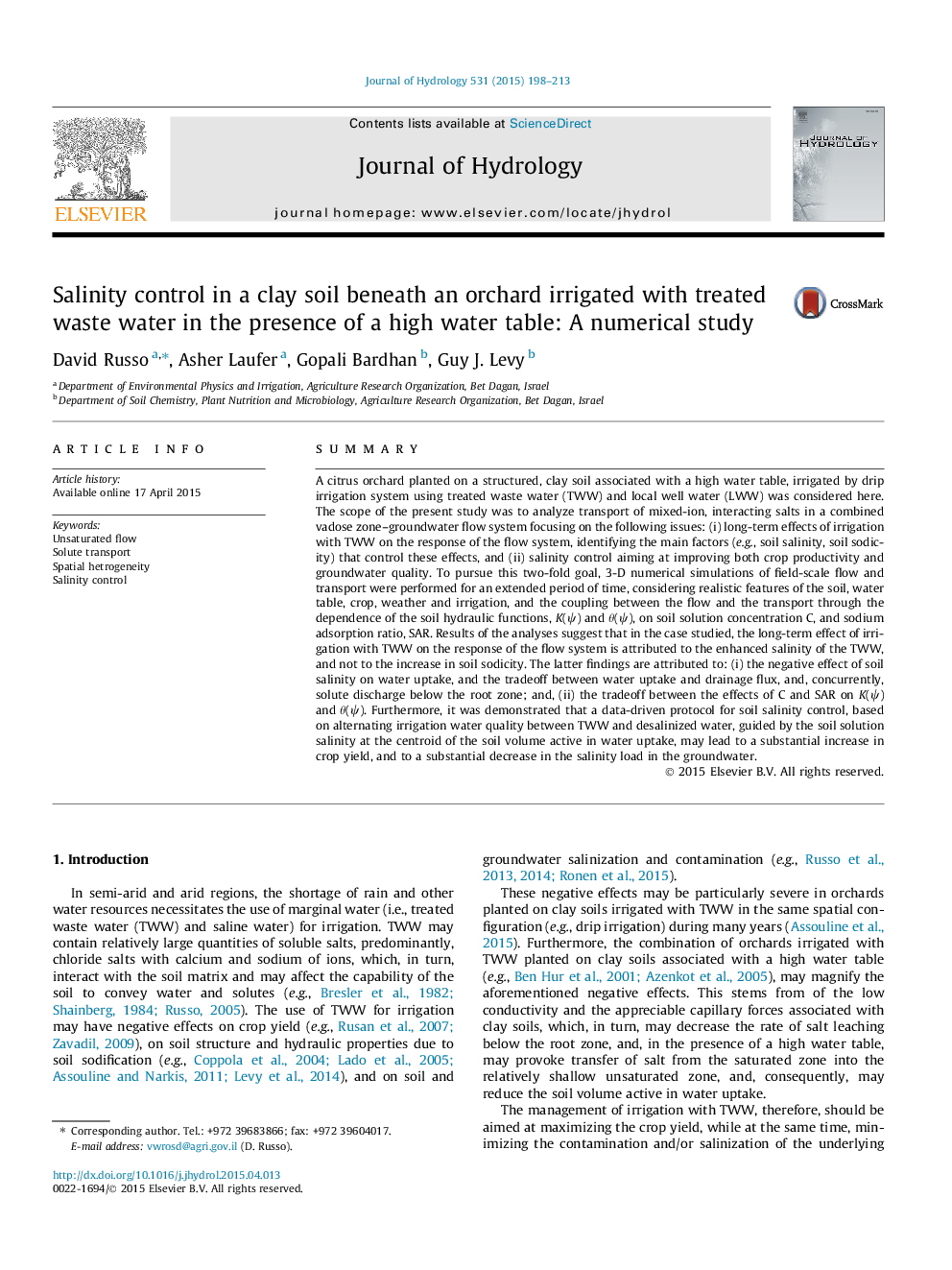| کد مقاله | کد نشریه | سال انتشار | مقاله انگلیسی | نسخه تمام متن |
|---|---|---|---|---|
| 4575891 | 1332880 | 2015 | 16 صفحه PDF | دانلود رایگان |
• Response of the flow system is affected by enhanced salinity of TWW.
• Salinity may compensate in part for the adverse effects of SAR on K.
• Soil salinity may be controlled by alternating irrigation water quality.
• This protocol may improve crop productivity and groundwater quality.
SummaryA citrus orchard planted on a structured, clay soil associated with a high water table, irrigated by drip irrigation system using treated waste water (TWW) and local well water (LWW) was considered here. The scope of the present study was to analyze transport of mixed-ion, interacting salts in a combined vadose zone–groundwater flow system focusing on the following issues: (i) long-term effects of irrigation with TWW on the response of the flow system, identifying the main factors (e.g., soil salinity, soil sodicity) that control these effects, and (ii) salinity control aiming at improving both crop productivity and groundwater quality. To pursue this two-fold goal, 3-D numerical simulations of field-scale flow and transport were performed for an extended period of time, considering realistic features of the soil, water table, crop, weather and irrigation, and the coupling between the flow and the transport through the dependence of the soil hydraulic functions, K(ψ) and θ(ψ), on soil solution concentration C, and sodium adsorption ratio, SAR. Results of the analyses suggest that in the case studied, the long-term effect of irrigation with TWW on the response of the flow system is attributed to the enhanced salinity of the TWW, and not to the increase in soil sodicity. The latter findings are attributed to: (i) the negative effect of soil salinity on water uptake, and the tradeoff between water uptake and drainage flux, and, concurrently, solute discharge below the root zone; and, (ii) the tradeoff between the effects of C and SAR on K(ψ) and θ(ψ). Furthermore, it was demonstrated that a data-driven protocol for soil salinity control, based on alternating irrigation water quality between TWW and desalinized water, guided by the soil solution salinity at the centroid of the soil volume active in water uptake, may lead to a substantial increase in crop yield, and to a substantial decrease in the salinity load in the groundwater.
Journal: Journal of Hydrology - Volume 531, Part 1, December 2015, Pages 198–213
